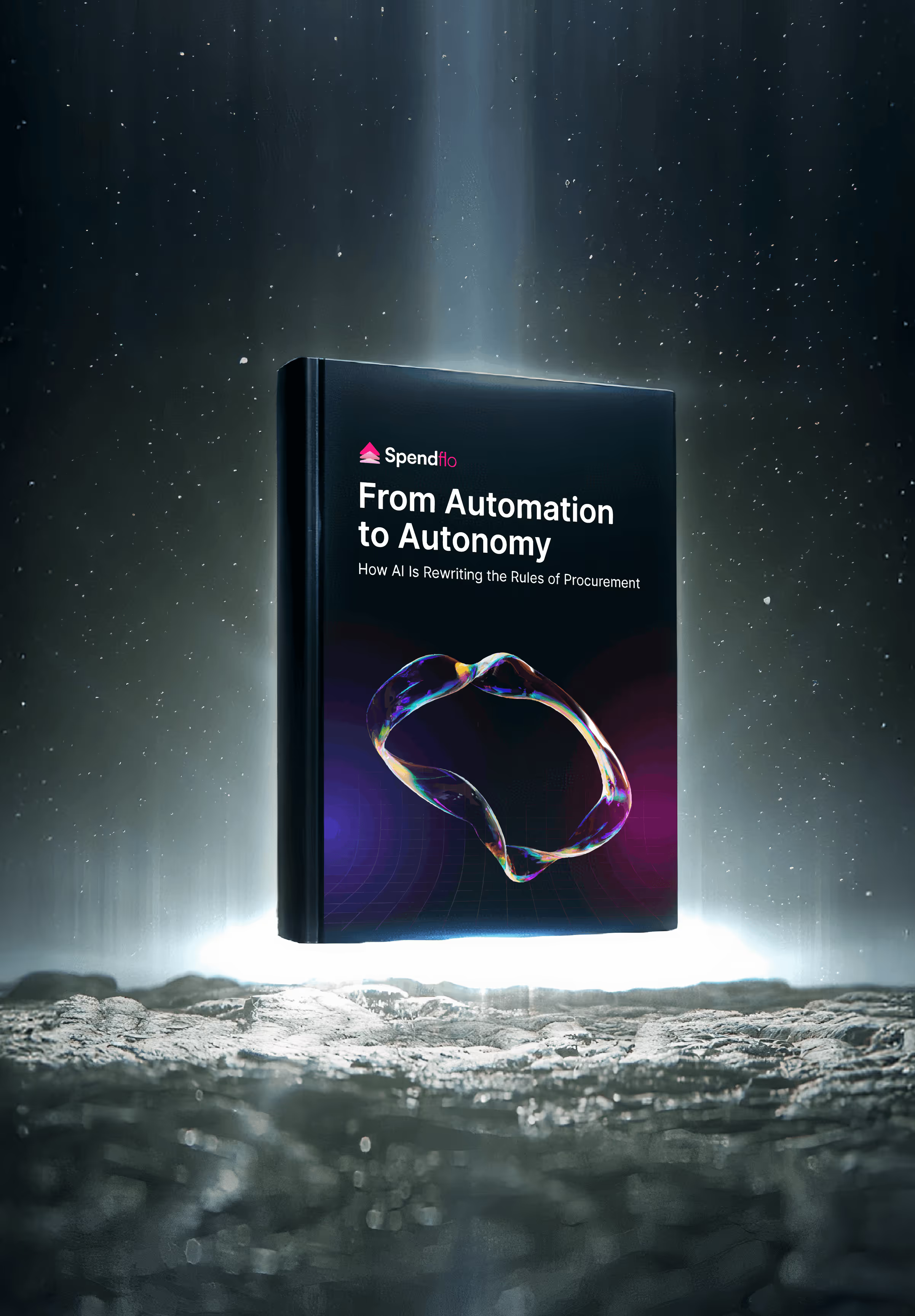

Top 11 Supplier Risk Management Software for 2025

Top 11 Supplier Risk Management Software for 2025
Explore the top 11 supplier risk management software solutions for 2025. Learn how these tools enhance compliance and reduce supply chain disruptions.


According to the latest Annual Risk Survey by RapidRatings, 68% of supply chain professionals anticipate increased risks in 2025. With global supply chains becoming more volatile, companies can no longer afford to overlook supplier risk. Implementing the right supplier risk management software is now a critical part of any risk mitigation strategy.
From financial instability to compliance failures, a weak supplier can expose organizations to financial losses, regulatory penalties, and reputational damage. This is where supplier risk management software proves essential - helping businesses proactively evaluate vendor health, identify vulnerabilities, and take timely action to protect operations.
In this blog, we will:
- Define supplier risk management software and its role in business operations.
- Explore the key features to look for when selecting a solution.
- Review the top 11 supplier risk management software for 2025.
- Guide you on how to choose the right platform for your business needs.
- Discuss the benefits of using supplier risk management software and how it strengthens resilience.
- Answer frequently asked questions about supplier risk management tools.
What is Supplier Risk Management Software?
Supplier risk management software helps businesses assess, monitor, and mitigate risks associated with their suppliers. It analyzes factors like financial health, compliance status, cybersecurity vulnerabilities, and operational stability to minimize disruptions and ensure business continuity.
By using automation and real-time data, these tools provide visibility into supplier-related risks and help organizations make informed decisions to safeguard their supply chain.
Benefits of Using Supplier Risk Management Software
Investing in supplier risk management software helps businesses mitigate supply chain risks, enhance compliance, and improve overall operational efficiency. These tools provide real-time insights and proactive risk mitigation strategies to ensure a resilient supply chain.
Here are the key benefits of using supplier risk management software:

1. Reduces Financial and Operational Risks
Unstable suppliers can lead to financial losses, delayed deliveries, and operational disruptions. Supplier risk management software analyzes financial health, operational performance, and market conditions to detect risks early. This helps businesses avoid costly vendor failures and maintain business continuity.
2. Enhances Compliance and Regulatory Adherence
Many industries require suppliers to meet strict regulatory and compliance standards, such as GDPR, FCPA, ISO, and AML. Supplier risk management software automates compliance tracking, sends alerts for non-compliance and maintains audit trails, reducing legal and financial liabilities.
3. Improves Supplier Performance and Reliability
Tracking supplier performance metrics helps businesses identify underperforming vendors and make informed decisions. These platforms provide real-time performance analytics, risk scoring, and trend analysis, enabling procurement teams to work with reliable suppliers and negotiate better contracts.
4. Strengthens Supply Chain Resilience
Supply chain disruptions from economic instability, cybersecurity threats, or geopolitical issues. Supplier risk management software provides predictive risk assessments, automated alerts, and alternative supplier recommendations ensuring businesses can adapt quickly and minimize disruptions.
By leveraging supplier risk management software, companies can proactively manage risks, enhance compliance, and build stronger, more reliable supplier relationships - ultimately leading to cost savings and operational stability.
Key Features to Look for in a Supplier Risk Management Software
Supplier risk management software helps identify, assess, and mitigate supplier-related risks. The best tools offer real-time data, automate compliance, and support resilience in your supply chain.
Here are the essential features to look for:

- Automated risk assessment and scoring based on financial health, compliance records, cybersecurity, and performance indicators.
- Real-time compliance tracking with alerts for violations of standards like GDPR, ISO, and FCPA to avoid penalties.
- Continuous monitoring of financial, ESG, and operational metrics to flag risks as they emerge.
- Performance analytics that evaluate vendor efficiency, delivery, contract adherence, and overall reliability.
- Instant risk alerts for events like financial instability, regulatory issues, or geopolitical changes.
Choosing a platform with these features helps businesses proactively manage risk and maintain a resilient, compliant supply chain.
Next, let’s explore the top 11 supplier risk management software for 2025.
Top 11 Supplier Risk Management Software for 2025
Here’s a look at the best supplier risk management software solutions that can help businesses mitigate risks, enhance compliance, and optimize supplier relationships in 2025.
1. Spendflo
Spendflo is an all-in-one SaaS procurement and vendor management platform designed to help businesses reduce software costs, streamline vendor negotiations, and automate contract renewals. It provides real-time visibility into SaaS spending, vendor performance, and compliance tracking, making it a perfect solution for organizations looking to optimize their vendor management process.

About the Company - Type: Private | Year Founded: 2020 | Website: www.spendflo.com | Head Office Location: San Francisco, USA | Number of Employees: 51-200
Best for: Companies looking for cost optimization and centralized vendor management.
Key Features:
- Centralized SaaS vendor tracking and spend visibility
- Automated renewal reminders and contract management
- Negotiation support to reduce software costs
- AI-powered insights for cost savings and optimization
- Seamless integration with procurement and finance tools
This makes Spendflo a powerful supplier risk management software platform for businesses focused on cost optimization and centralized SaaS vendor control.
2. SAP Ariba
SAP Ariba offers end-to-end supplier risk management, helping companies assess financial, operational, and compliance risks across their supply chain. With AI-driven risk assessment and automated alerts, businesses can mitigate potential supplier disruptions before they impact operations.

About the Company - Type: Public (SAP) | Year Founded: 1996 | Website: www.ariba.com | Head Office Location: Palo Alto, USA | Number of Employees: 3,000+
Best for: Enterprises needing a scalable, AI-powered supplier risk management solution.
Key Features:
- AI-powered risk assessment for supplier reliability
- Automated risk alerts for compliance and financial risks
- Third-party data integration for deeper risk analysis
- Real-time supplier performance tracking
- Seamless connection with SAP ERP and procurement tools
With its end-to-end visibility and automated compliance tracking, SAP Ariba stands out as a comprehensive supplier risk management software for large enterprises managing global supply chains.
3. Coupa Risk Aware
Coupa Risk Aware helps companies manage supplier risks by leveraging AI-powered insights , real-time risk monitoring, and compliance automation. It enables procurement teams to make data-driven supplier decisions and enhance risk mitigation strategies.

About the Company - Type: Public (COUP) | Year Founded: 2006 | Website: www.coupa.com | Head Office Location: San Mateo, USA | Number of Employees: 3,000+
Best for: Organizations seeking real-time supplier monitoring and compliance tracking.
Key Features:
- Continuous supplier risk monitoring powered by AI
- Financial, operational, and compliance risk assessments
- Pre-built risk scoring models for vendor evaluation
- Automated alerts for regulatory violations
- Seamless integration with Coupa Spend Management Suite
Coupa delivers strong analytics and real-time risk insights, making it a reliable supplier risk management software choice for mid-sized to large organizations aiming to improve procurement control.
4. EcoVadis
EcoVadis specializes in supplier sustainability and ESG risk assessment, helping businesses ensure that their vendors adhere to ethical and sustainable practices.

About the Company - Type: Private | Year Founded: 2007 | Website: www.ecovadis.com | Head Office Location: Paris, France | Number of Employees: 1,000+
Best for: Businesses focusing on sustainability and ESG risk assessment in supplier management.
Key Features:
- AI-powered sustainability risk assessments
- ESG compliance tracking and supplier ratings
- Benchmarking and analytics for supply chain sustainability
- Collaboration tools for supplier engagement
- Seamless integration with procurement platforms
EcoVadis offers in-depth sustainability and ESG risk assessments, making it a go-to supplier risk management software for organizations with responsible sourcing goals.
5. Avetta
Avetta focuses on supplier prequalification, compliance, and workforce safety by enabling businesses to evaluate supplier health and safety records, regulatory compliance, and operational risks.

About the Company - Type: Private | Year Founded: 2003 | Website: www.avetta.com | Head Office Location: Orem, USA | Number of Employees: 1,500+
Best for: Companies prioritizing supply chain compliance and workforce safety.
Key Features:
- Risk-based supplier prequalification and audits
- Real-time monitoring of supplier compliance
- Workforce safety and training compliance tools
- Automated risk scoring and dashboards
- Integration with ERP and procurement systems
Avetta simplifies contractor prequalification and compliance monitoring, positioning it as a reliable supplier risk management software for high-risk industries like construction and manufacturing.
6. GEP SMART
GEP SMART provides a unified procurement and supplier risk management platform, leveraging AI and big data to identify supplier vulnerabilities and optimize procurement strategies.

About the Company - Type: Private | Year Founded: 1999 | Website: www.gep.com | Head Office Location: Clark, USA | Number of Employees: 5,000+
Best for: Enterprises needing AI-powered procurement and risk management.
Key Features:
- AI-driven supplier risk analysis
- Real-time risk alerts and predictive insights
- Comprehensive spend and risk analytics
- Automated risk mitigation workflows
- Seamless integration with SAP, Oracle, and Microsoft systems
GEP SMART combines procurement and risk insights in a unified platform, making it a powerful supplier risk management software for large enterprises seeking end-to-end visibility.
7. Prevalent
Prevalent specializes in third-party risk management by assessing financial, operational, and cybersecurity risks posed by suppliers.

About the Company - Type: Private | Year Founded: 2004 | Website: www.prevalent.net | Head Office Location: Phoenix, USA | Number of Employees: 250+
Best for: Businesses requiring third-party risk management and cyber risk assessment.
Key Features:
- Automated third-party risk assessments
- Supplier cybersecurity risk monitoring
- Compliance tracking for GDPR, SOC 2, and ISO
- AI-powered risk mitigation workflows
- Integration with IT security and procurement platforms
Prevalent supports risk assessments, continuous monitoring, and compliance reporting, establishing itself as a versatile supplier risk management software for third-party governance.
8. RapidRatings
RapidRatings provides financial risk analytics, helping businesses evaluate the long-term viability of suppliers based on financial performance metrics.

About the Company - Type: Private | Year Founded: 2008 | Website: www.rapidratings.com | Head Office Location: New York, USA | Number of Employees: 200+
Best for: Organizations needing financial health risk assessment for suppliers.
Key Features:
- Financial health risk scoring for suppliers
- Predictive analytics for supplier insolvency risks
- Automated financial data collection and benchmarking
- Customizable risk reports and dashboards
- Seamless integration with procurement and ERP tools
With its focus on financial health scoring, RapidRatings is a trusted supplier risk management software companies looking to reduce exposure to vendor financial failures.
9. Jaggaer One
Jaggaer One is an end-to-end procurement and supplier risk management platform that provides AI-driven risk monitoring, predictive analytics, and automated compliance tracking. It helps businesses centralize supplier data, assess risks, and optimize procurement processes.

About the Company - Type: Private | Year Founded: 1995 | Website: www.jaggaer.com | Head Office Location: Morrisville, USA | Number of Employees: 1,200+
Best for: Large enterprises needing AI-powered supplier risk and procurement management.
Key Features:
- AI-driven risk analysis and predictive alerts
- Automated compliance tracking for industry regulations
- 360-degree supplier visibility with performance metrics
- Risk mitigation workflows and engagement tools
- Seamless integration with SAP, Oracle, and Microsoft Dynamics
Jaggaer One integrates risk intelligence across the sourcing lifecycle, making it a strategic supplier risk management software for data-driven procurement teams.
10. Resilinc
Resilinc provides real-time supplier risk intelligence,helping businesses track geopolitical, financial, and operational risks thatmay impact supply chains. With predictive analytics and AI-driven insights,companies can mitigate disruptions before they escalate.

About the Company - Type: Private | Year Founded: 2010 | Website: www.resilinc.com | Head Office Location: Milpitas, USA | Number of Employees: 200+
Best for: Businesses requiring supply chain risk intelligence and disruption monitoring.
Key Features:
- Real-time risk monitoring with AI-driven insights
- Disruption tracking for geopolitical, environmental, and cyber risks
- Automated risk alerts and impact assessments
- Collaborative tools for supplier risk mitigation
- Integration with ERP and procurement platforms
Resilinc delivers real-time supply chain disruption alerts and mapping, offering a proactive supplier risk management software solution for operational resilience.
11. LexisNexis Entity Insight
LexisNexis Entity Insight helps businesses assess financial and regulatory risks associated with suppliers, ensuring compliance with global standards such as AML, GDPR, and FCPA. It provides real-time alerts on adverse media, sanctions, and financial changes, helping organizations avoid high-risk vendors.

About the Company - Type: Private | Year Founded: 1970 | Website: www.lexisnexis.com | Head Office Location: New York, USA | Number of Employees: 10,000+
Best for: Organizations focusing on regulatory compliance and financial risk monitoring.
Key Features:
- Real-time financial and regulatory risk tracking
- Adverse media and sanction monitoring
- Supplier compliance scoring and automated alerts
- Global supplier database for risk intelligence
- Seamless integration with procurement and risk management systems
These top 11 supplier risk management software solutions provide businesses with the tools needed to monitor supplier risks, ensure compliance, and strengthen supply chain resilience.
LexisNexis Entity Insight monitors legal, reputational, and financial risks, making it a comprehensive supplier risk management software for due diligence and compliance teams.
How to Choose the Best Supplier Risk Management Software
With so many options available, selecting the right supplier risk management software depends on your business size, industry requirements, and risk priorities.
While platforms like Coupa, SAP Ariba, and GEP SMART offer comprehensive procurement suites, they often require lengthy implementations and are built for large enterprises with complex supply chains. Spendflo, on the other hand, is purpose-built for fast-growing companies that need a nimble, SaaS-first approach to vendor risk.
It combines supplier risk management software capabilities with embedded procurement support - delivering faster time to value, real-time insights, and cost savings without the operational overhead.
Want to see how Spendflo fits your supplier risk strategy? Book a demo today.
Here are a few key factors to consider when making a decision:
Industry-Specific Needs: Ensure the software aligns with your industry’s regulatory compliance and risk factors (e.g., financial services, healthcare, or manufacturing).
Risk Coverage: Look for a solution that offers financial, operational, cybersecurity, and ESG risk assessments.
Integration Capabilities: The platform should seamlessly integrate with ERP, procurement, and compliance management systems.
Scalability: If your business is growing, opt for a scalable solution that can handle an increasing number of suppliers.
Ease of Use: A user-friendly interface and automated reporting can improve efficiency and risk monitoring.
Cost vs. Value: Compare pricing models to determine which solution provides the best value for your budget.
By evaluating these factors, businesses can select the best supplier risk management software that enhances supply chain stability and minimizes operational disruptions.
How Spendflo Simplifies Supplier Risk Management
Spendflo simplifies supplier risk management by offering a centralized platform to track vendor performance, manage contracts, and assess risk in real time. Designed for fast-growing companies, it enables procurement and finance teams to monitor supplier information, ensure compliance with regulatory requirements, and streamline renewal workflows.
With embedded procurement support, Spendflo goes beyond software - helping teams negotiate better vendor contracts and proactively mitigate supply chain risks. The platform also automates issue management, offers clear data visualization, and ensures that all supplier interactions are transparent and traceable. Whether you're managing a growing supplier network or optimizing compliance processes, Spendflo provides the tools and insights needed to stay ahead of risk.
Frequently Asked Questions (FAQs) on Supplier Risk Management Software
1. Why is supplier risk management software important?
Supplier risk management software helps businesses identify, assess, and mitigate risks related to vendors. It ensures regulatory compliance, improves supply chain stability, and reduces financial risks by providing real-time insights and automated risk alerts.
2. How does supplier risk management software work?
These platforms collect and analyze supplier data, assessing financial health, compliance, and cybersecurity risks, and operational stability. They use AI-driven analytics, risk scoring models, and automated alerts to help organizations proactively manage vendor risks.
3. What industries benefit most from supplier risk management software?
Industries with complex supply chains or strict regulatory requirements, such as manufacturing, finance, healthcare, technology, and retail, benefit the most. These tools help ensure business continuity, compliance, and cost control.
4. What’s the difference between supplier risk management and third-party risk management?
Supplier risk management focuses on evaluating risks from direct suppliers, while third-party risk management covers vendors, subcontractors, and service providers, and affiliates. Both aim to minimize operational and compliance risks.
5. How do I choose the best supplier risk management software for my business?
Consider industry needs, risk coverage, and integration options, scalability, ease of use, and pricing. Businesses should prioritize software that automates risk monitoring, integrates with procurement systems and provides real-time risk alerts.
6. How does vendor risk management software improve compliance workflows?
Vendor risk management software helps businesses streamline compliance workflows by automating tasks such as regulatory tracking, risk assessments, and audit management. With AI-powered assessments, companies can proactively monitor suppliers for compliance with industry standards, reducing manual errors and ensuring continuous compliance with evolving regulations.
7. Why is continuous monitoring important in supplier risk management?
Continuous monitoring enables businesses to track supplier performance, financial health, and compliance risks in real-time. A robust risk management software tool provides risk scores and risk ratings that help companies detect early warning signs of financial instability, cyber threats, or reputational risks. This ensures organizations can take proactive measures before risks escalate into major supply chain disruptions.
8. What features should a vendor risk management tool have for better decision-making?
A strong vendor risk management tool should include customizable workflows, single source data integration, and customizable reporting to support data-driven decisions. It should also provide regulatory compliance tracking, audit management, and mobile app access to allow teams to conduct real-time compliance checks and manage third-party relationships efficiently.










.png)

.avif)




.png)















